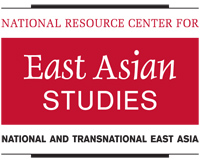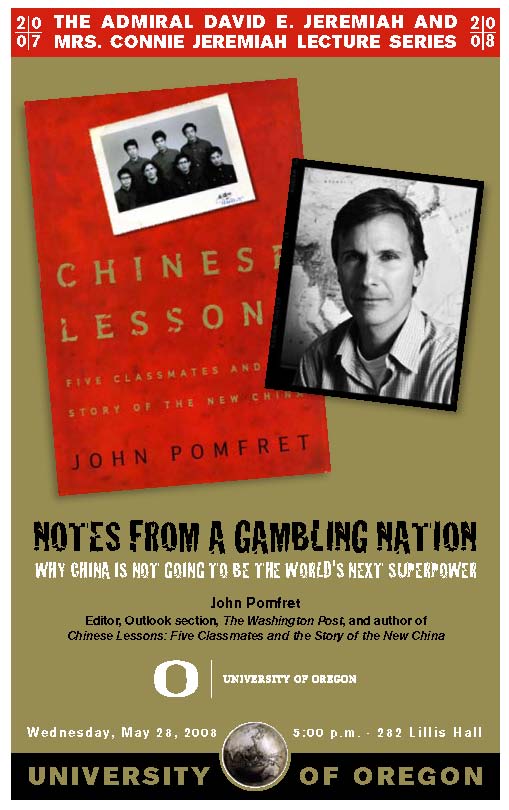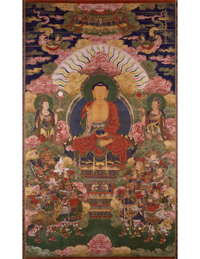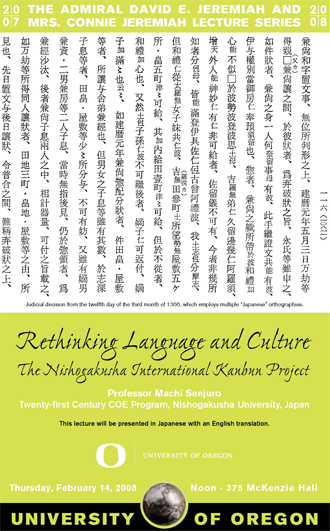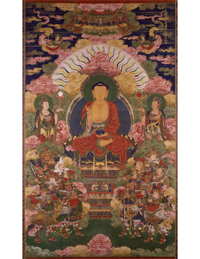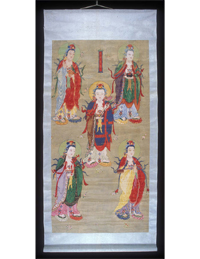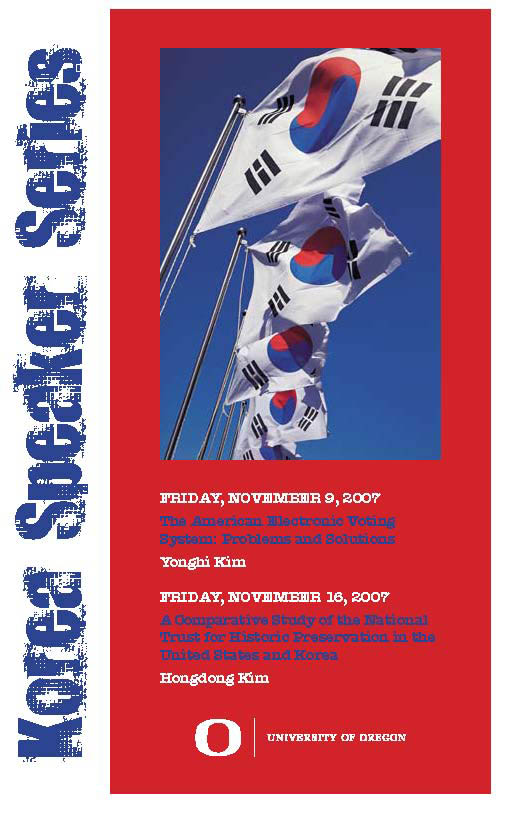Current Fellows
2017-18 Academic Year FLAS Fellows:
Graduate Fellows:
Nakota DiFonzo
Asian Studies, Chinese
Ken Ezaki
Asian Studies, Japanese
Sara King
East Asian Languages and Literatures, Korean
Joelle Thorne
East Asian Languages and Literatures, Japanese
Undergraduate Fellows:
Carynn Bratton
Cinema Studies, Korean
Jeremy Henninger-Chiang
East Asian Languages and Literatures/Asian Studies, Chinese
Alison Roden
East Asian Languages and Literatures/International Studies, Chinese
Ben Yuan Sheng Song
East Asian Languages and Literatures/Biology, Chinese
Previous FLAS Fellows
Summer 2017
Jason Lester, Comparative Literature, Chinese
Matthew Fouts, Law/International Studies, Japanese
Ellie Yeo, Linguistics, Chinese
Allene Shaw, Asian Studies, Japanese
Victoria Kwong, EALL/Economics, Chinese
Thomas Kelson, EALL/Romance Languages, Chinese
You Tao Ma, EALL/Chemistry, Chinese
2016-17 Academic Year
Dylan Brady, Geography, Chinese
Katherine Messer, Asian Studies, Chinese
Jason Lester, Comparative Literature, Chinese
Sean Brennan, East Asian Languages and Literatures, Chinese
Dana Benelli, EALL/Comparative Literature, Japanese
Katelyn Terra, EALL/Comparative Literature, Japanese
You Tao Ma, EALL/Chemistry, Chinese
Victoria Kwong, EALL/Economics, Chinese
Summer 2016
Elise Choi, East Asian Languages and Literatures, Japanese
Emily Cole, History, Japanese
Kun Xie, Art History, Japanese
Megan Pellouchoud, Asian Studies, Korean
Thomas Kelson, EALL/Romance Languages, Chinese
Alison Roden, East Asian Languages and Literatures, Chinese
Roxanne Fieldhouse, Biology, Japanese
Kasey Sullivan, East Asian Languages and Literatures, Chinese
2015-16 Academic Year
Brandon Folse, Asian Studies, Chinese
Emily Cole, History, Japanese
Robert Moore, Comparative Literature, Chinese
Breann Goosman, History, Japanese
Gwendolyn Snider, PPPM/REEES, Chinese
Kelsey Reed, East Asian Languages and Literatures, Chinese
Rachel Grant, EALL/Economics, Japanese
Kasey Sullivan, East Asian Languages and Literatures, Chinese
Summer 2015
Alison Parman, Art History, Japanese
Billy Goehring, Philosophy, Korean
Breann Goosmann, History, Japanese
Elise Choi, East Asian Languages and Literatures, Japanese
Ian Cipperly, History, Japanese
John Moore, East Asian Languages and Literatures, Japanese
Lee Moore, East Asian Languages and Literatures, Chinese
Allen Blanton, Chinese/Architecture, Chinese
Kasey Sullivan, East Asian Languages and Literatures, Chinese
Kylee Riala, East Asian Languages and Literatures, Japanese
Sarah Ramsey, Chinese/Business, Chinese
Shawna Sullivan, Chinese, Chinese
Ya Zhen Tan, Chinese/Psychology, Korean
Katelyn Terra, East Asian Languages and Literatures/Comparative Literature, Japanese
Alexander Fok, Japanese/Computer and Information Science, Japanese
Grace Jo, East Asian Languages and Literatures/Business, Chinese
2014-15 Academic Year
Hillary Maxson, History, Japanese
John D. Moore, East Asian Languages and Literatures, Japanese
Jessica Neafie, Political Science, Chinese
Michelle Crowson, Comparative Literature, Japanese
Benjamen DoVale, Political Science, Chinese
Ryan Michaels, East Asian Languages and Literatures, Japanese
Ayantu Megerssa, International Studies, Chinese
Summer 2014
Grace Jo, Business, Chinese
Alexis Mansour, Linguistics & East Asian Languages and Literature, Chinese
Gwendolyn Snider, Planning, Public Policy & Management, Chinese
Michelle Crowson, Comparative Literature, Japanese
Yu Chih Chou, East Asian Languages and Literature, Japanese
Sabra Harris, Folklore, Japanese
Jessica Neafie, Political Science, Chinese
Katriel Perry, Chinese, Chinese
Lindsey Larvick, undeclared, Chinese
Mani Woodward, Human Physiology, Chinese
Katherine Messer, Asian Studies, Chinese
Ana Rodriguez, Chinese/Spanish, Chinese
2013-14 Academic Year
Abram Emil Conant, East Asian Languages and Literatures, Chinese
Daniel Borengasser, History, Japanese
Michelle Crowson, Comparative Literature, Chinese
Rachel Wallner, Asian Studies, Chinese
Brian O’Donnell, East Asian Languages and Literatures, Chinese
Kathryn Lovett, East Asian Languages and Literatures, Japanese
Lauren Dalton, East Asian Languages and Literatures, Japanese
Summer 2013
Brian O’Donnell, EALL/REES, Chinese
Daniel Borengasser, History, Japanese
Elizabeth Grosz, Philosophy, Japanese
Erik Thorbeck, EALL/INTL, Chinese
Kathryn Lovett, East Asian Languages and Literatures, Korean
Michelle Crowson, Comparative Literature, Chinese
Samantha Gammons, International Studies
2012-13 Academic Year
Erik Glowark, History, Japanese
Ha Beom Kim, Anthropology, Chinese
Dylan Brady, Geography, Chinese
Rebekah Hunter, History, Japanese
Roxanne Olsson, International Studies, Chinese
Nichole Woodruff, Psychology, Korean
Brian O’Donnell, Russian/Chinese, Chinese
Brianna Eamons, Political Science/International Studies, Japanese
Lea Anderson, East Asian Languages and Literatures, Chinese
Hannelore Atteberry, Japanese, Japanese
Summer 2012
Julia Trippe, Linguistics
Faith Kreskey, Art History
Heather Cates, Art History
Robert pace, Chinese
Victoria Zhu, Mathematics and Chinese
May Schlotzhaur, Art History
Erika Watts, Japanese and International Studies
Brian O’Donnell, Chinese and Russian
Ji-Woo Suh, Journalism
Julia Sim, Undeclared
2011-12 Academic Year
Erik Glowark, History, Japanese
Kyle Fortenberry, History, Chinese
Jesse Rodenbiker, Asian Studies, Chinese
Pedro Bassoe, East Asian Languages and Literatures, Japanese
Sze Yan Li, Japanese/Product Design/Computer Information Science, Japanese
Margaret Simons, Chinese/Asian Studies, Chinese
Brandon Yeh, Political Science/Chinese, Chinese
Summer 2011
Rachel Wallner, Chinese, Asian Studies
Bryna Tuft, Chinese, East Asian Language and Literature
Kyle Nystrom, Japanese, Computer Science
Julie DePaulo, Japanese, Folklore
Matthew Hayes, Japanese, Asian Studies
Brian O’Donnell, Chinese, Classics
Lloyd Hall, Japanese, International Studies
Steven McVey, Korean, East Asian Language and Literature
Kelly Mucklestone, Chinese, Political Science/ Chinese
Timothy Arnold, Japanese, East Asian Language and Literature
2010-11 Academic Year
Hillary Maxson, Japanese, History
Katherine Thompson, Chinese, East Asia Languages and Literature
Julia Trippe, Korean, Linguistics
Kyle Shernuk, Japanese, East Asia Languages and Literatures
Gracie Beaver, Japanese, East Asian Languages and Literatures
Lauren Dickey, Chinese, Asian Studies
Lucy Gubbins, Japanese, Linguistics/Anthropology
Summer 2010
Genevieve Beecher, Chinese, International Studies
Charles Campbell, Chinese, Economics
Ashley Chan, Japanese, Literature
Allison Fonder, Chinese, Literature
Eric Gustafson, Japanese, Literature
Holina Ung, Chinese, International Studies
Nathan Fischler, Chinese, History
Emily Neyman, Chinese, Accounting
Dennis Tanner, Chinese, Literature
Stephen Glasgow, Japanese, History
2009-10 Academic Year
Bryna Tuft, Chinese, Literature
Grace Oh, Japanese, Linguistics
Kyle Shernuk, Chinese, Literature
Lisa Goetz, Chinese, Literature
Monica McClellan, Japanese, Literature
Patrick Terry, Japanese, Literature
Vanessa Mousavizadeh, Chinese, Planning, Public Policy, Management
Summer 2009
Katherine Thompson, Chinese, Literature
Kathryn Barton, Japanese, Literature
Keryn Price, Japanese, Literature
Stephen Henry, Japanese, Accounting
2008-09 Academic Year
Edwin Way, Chinese, Political Science
Grace Oh, Japanese, Linguistics
Patrick Terry, Japanese, Literature
Rory Walsh, Chinese, Anthropology
Sandra Koike, Japanese, Architecture
Tristan Grunow, Korean, History
Vanessa Mousavizadel, Chinese, Political Science
Summer 2008
Edwin Way, Chinese, Political Science
Jason Ross, Chinese, EALL
Kathryn Barton, Japanese, Literature
Paul Bournhonesque, Korean, Linguistics
Sandra Koike, Japanese, Architecture
2007-08 Academic Year
Cayce Pallister, Japanese, EALL
Chloe Garcia Roberts, Chinese, Literature
Christopher Hagen, Chinese, International Studies
Colleen Laird, Japanese, EALL
Edwin Way, Chinese, Political Science
Maureece Levin, Japanese, Anthropology
Summer 2007
Christopher Hagen, Chinese, International Studies
Grace Oh, Japanese, Linguistics
Gwendolyn Lowes, Chinese, Linguistics
Jon Jablonski, Chinese, Geography
Sandra Koike, Japanese, Architecture
2006-07 Academic Year
Austin Parks, Japanese, History
Colleen Laird, Japanese, EALL
Gwendolyn Lowes, Chinese, Linguistics
Kathryn Russell, Chinese, Art History
Luke Yamaguchi, Japanese, EALL
Tirstan Grunow, History, Japanese
